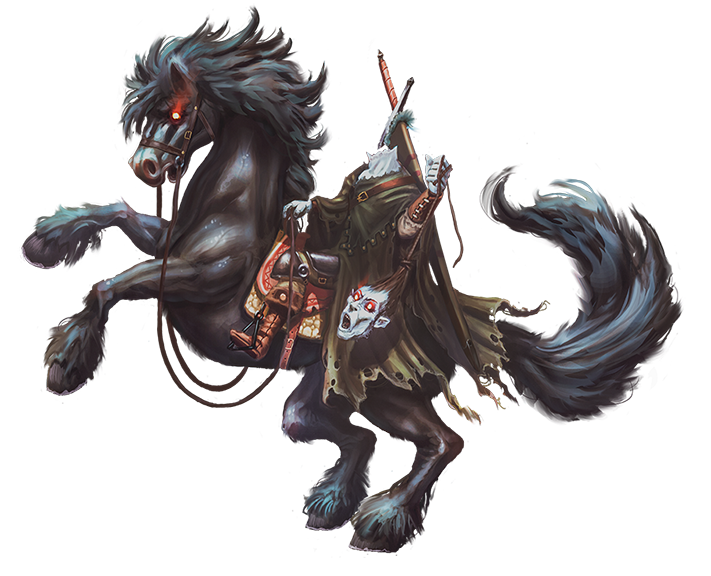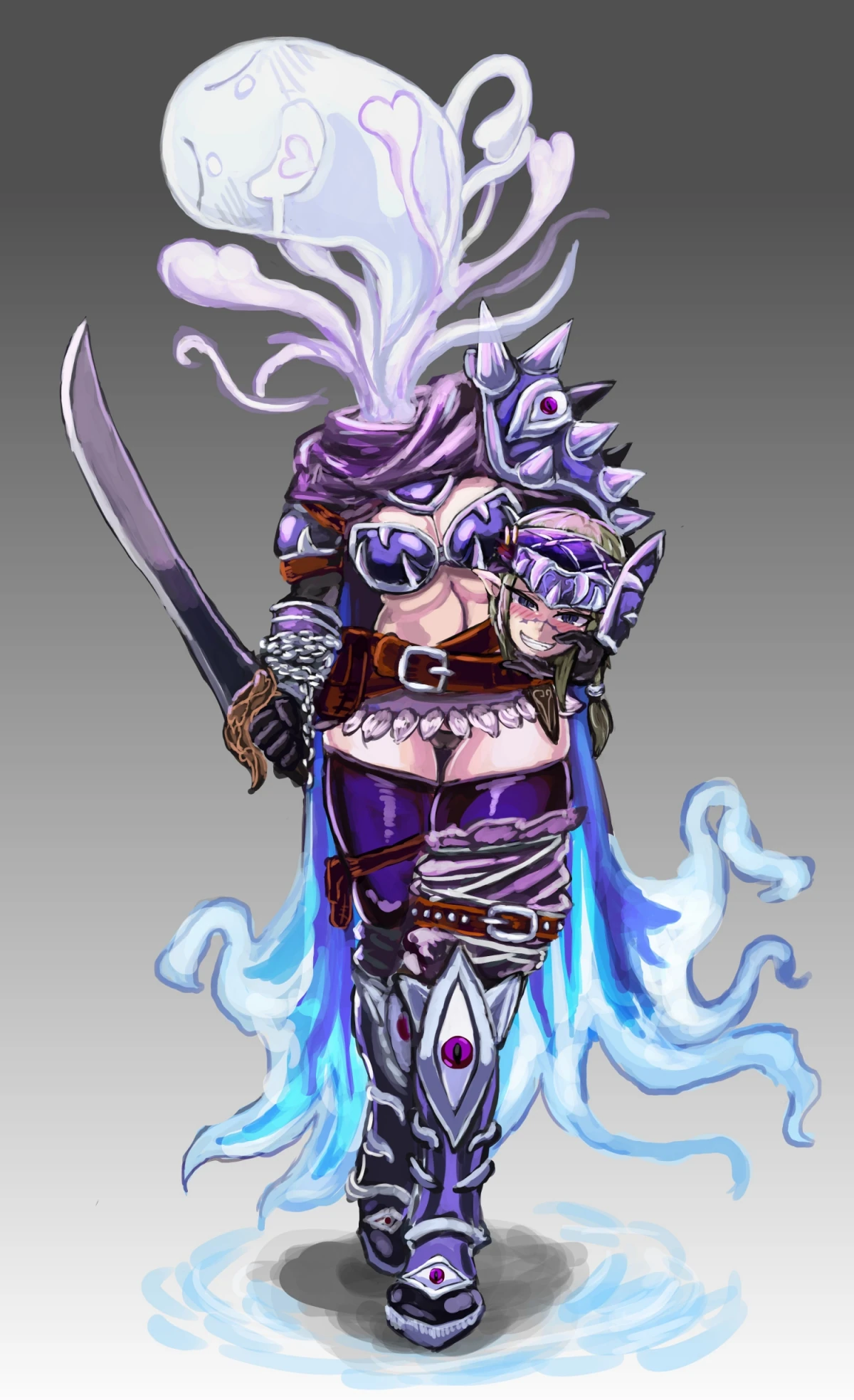
The Dullahan:
The Headless Horseman
The Dullahan are fey creatures, often associated with The Unseelie Court a.k.a. "The Unholy Court". Legends tell of a time when man offered up sacrifices to appease the gods of old, these sacrifices often came in the form of the severed head of a warrior who was deemed a worthy foe by the one offering up the sacrifice, as it was believed that the soul was found within the head itself. Now though, with the growing favor of more modern and seemingly peaceful gods, the practice was dropped and soon nearly forgotten. When sacrifices ended and the old gods all but consigned to oblivion, the Dullahan sightings began, they were as if the gods of old had now taken a physical form in their weakened state, and now set forth to collect the souls they were once promised.
Gan Ceann Physiology
The Dullahan often resemble headless humanoids, usually carrying the "missing" head by their side or holding it by their long, often braided, hair. Their skin is of a pale sickly ethereal blue, and seems to be quite smooth, revealing their partial undead nature, and an ethereal mist can be seen dissipating from where the head should be. Their eyes, which are small and black, come in a variety of iris colors that range from natural to unnatural, and always seem to dart about like malignant flies. The entire head glows with the pale phosphorescence of decaying matter and the creature may use it as a lantern to guide its way.
Harbingers of Demise
Often hailing from the darkest of fey courts, the Unseelie Courts, the Dullahan are seen as macabre creatures that walk hand in hand with death itself. They were once known to serve powerful fey lords and ladies, riding far and wide in the capacity of a herald or an ambassador. More often than not they carry doom to any wretch who roused their lord’s ire.
--


Lone Rider
Dullahan more-or-less keep to themselves, as even among the fey folk they are seen as beings who walk too close in hand with death, and really spend hardly any time with any other creature aside from their own trusted steed.
Dullahan Names
The ritual that creates a Dullahan robs them of the memories of their previous life, including their name. As such, they often give a new one to themselves, or adopt a nickname. Some dullahan take on human names or nicknames when interacting with other races.
- Male: Áed, Cathasach, Bran, ...
- Female: Béḃinn, Doireann, Maeve, ...
Dullahan Traits
Dullahan have the following traits
Ability Score Increase: Your Charisma increases by 2 and one other ability score of your choice increases by 1.
Age: Dullahan do not age, nor are they born. New dullahan are created through a dark ritual, where a sacrifice is decapitated, their very soul unmade and replaced by a vestige of the old gods.
Alignment: Dullahan tend toward neutral alignments.
Size: Dullahan are about the height of a human. As a Dullahan you are a medium creature.
Speed:Your walking speed is 30 ft.
Languages: You speak Common and Sylvan.
Fey Nature: Your creature type is fey, rather than humanoid.
Darkvision: Your head can see in dim light within 60 feet of you as if it were bright light, and in Darkness as if it were dim light. You can’t discern color in Darkness, only shades of gray.
Unseelie Magic: You know the ‘Toll the Dead’ cantrip. Once you reach 3rd level you can cast ‘Find steed’ once per long rest. The mount conjured is considered a fey creature. Additionally the steed can be stored in your shadow as an action and can be retrieved as a bonus action. Once you reach 5th level you can cast 'Knock' once per long rest. Charisma is your spellcasting ability for these spells.
Unseelie Nature: With a nature that treads the line between fey and undead, you are above certain mortal needs. You don’t need to eat or drink, although you can choose to do so, and additionally you ignore exhaustion gained as a consequence of travelling at a fast pace.
Aurophobia: You are naturally afraid of gold, and as such will never accept payment in its form, taking it instead as other precious metals or gems. You have disadvantage against intimidation checks or fear effects from creatures made of or wearing gold, and gold or gold-plated weapons have advantage on attack rolls against you.
Headless: Your head and your body are separated, the wound that cut through your neck never healing, although you can choose to sew your head to your neck using your hair as thread during a long rest. While your head is separated from your neck you gain the following effects
- You cannot be killed by decapitation.
- You always know the distance and direction to your head. Any effect that prevents divination magic prevents this effect.
- While separated from your body has blindsight with a radius of 10ft, and is blind beyond this radius.
- While being carried your head casts dim light in a 20ft radius
- Your head can perform the verbal components of spells, and the body can perform the somatic. Spells without somatic components are cast from your head, and ones without verbal components are cast from your body. If it has both, you can choose from where your spell originates. Unless your head is being carried, it can be targeted, its AC being equal to yours but without the benefit of Dexterity or armour that does not include a helmet. You cannot be damaged twice by an area of effect due to this. Your head automatically fails Dexterity saving throws.
Credits
- Cover Image by DY 33
- Page 2 (bottom left) by Pathfinder 2nd Edition
- Page 2 (top right) by DY 33
- Page 3 (bottom right) by Udetamago
_ _
_ _
